Hanoi, the vibrant capital of Vietnam, is a city that pulses with history, culture, and charm. A blend of ancient traditions and modern influences, it captivates millions of visitors each year who flock to explore its rich tapestry of attractions. From the serene waters of Hoan Kiem Lake, steeped in legend, to the bustling alleys of the Old Quarter brimming with delectable culinary delights, every corner of Hanoi offers unique experiences that reflect both its heritage and contemporary life. The city's enchanting streets echo with the sounds of street vendors selling local delicacies, and the aroma of phở wafts through the air, luring in passersby. This city isn't just a destination; it's an invitation to immerse oneself in the beauty and complexity of Vietnamese culture.
Whether you are wandering through ancient temples, indulging in a traditional water puppet show, or exploring its diverse market scene, visitors will find that each experience contributes to a deeper understanding of the country's identity. In this comprehensive guide, we delve into the top historical attractions, cultural experiences, natural wonders, and unique sites that make Hanoi a must-visit destination in Southeast Asia.
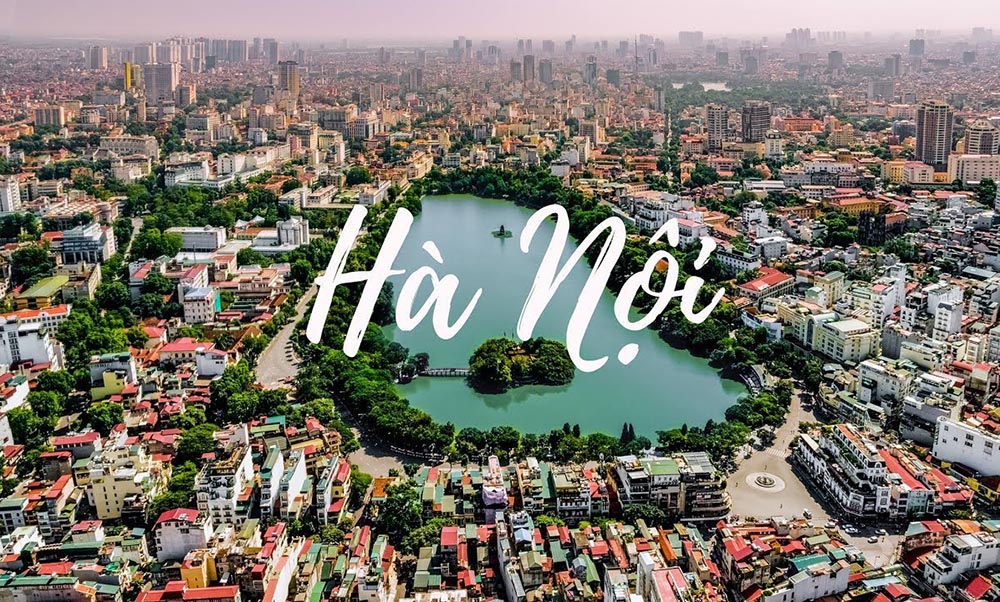
Hanoi's historical attractions are a window into Vietnam's storied past, reflecting the resilience of its people and the evolution of its culture over centuries. Among the most notable sites are Hoan Kiem Lake a romantic centerpiece of the city rich in folklore and the Imperial Citadel of Thang Long, a UNESCO World Heritage Site that served as the heart of political power for hundreds of years. The Hoa Lo Prison, often referred to as the "Hanoi Hilton," stands as a poignant reminder of Vietnam's struggle for independence. Each of these locations contributes to a deeper understanding of Vietnamese heritage and the extraordinary events that shaped the nation.
Visiting these attractions not only enriches your historical knowledge but also allows travelers to connect with the emotions and experiences that define Vietnam. As we explore the details of each significant site, we invite you to dive into the stories they hold, the beauty of their architecture, and the cultural significance that binds them to the heart of Hanoi.
Hoan Kiem Lake, often referred to as the heart and soul of Hanoi, is not just a picturesque body of water; it is a vital cultural landmark that encapsulates the spirit of the city. As one strolls along its tree-lined shores, one can feel the harmonious blend of nature and urban life. The lake spans approximately 12 hectares and is surrounded by bustling streets that breathe life into its serene atmosphere. Legend has it that the lake is home to a magical sword that Emperor Le Loi used to defeat foreign invaders, a narrative intricately woven into the cultural fabric of Vietnam.
The lake is not complete without the stunning Ngoc Son Temple, which stands majestically on a small island, linked by the iconic red Huc Bridge. This temple, dedicated to General Tran Hung Dao, boasts intricate wooden carvings that display traditional Vietnamese architectural beauty. As you step onto the bridge, the vibrant colors and artistic details evoke a sense of reverence and connection to the past. Visitors often come to participate in local rituals, offering incense and prayers, further enriching their experience.
| Feature | Hoan Kiem Lake | Ngoc Son Temple |
|---|---|---|
| Area | 12 hectares | Small island |
| Historical Significance | Legendary sword of Le Loi | Honors General Tran Hung Dao |
| Architectural Style | Traditional Vietnamese | Intricate wooden carvings |
| Accessibility | Central, easily reachable | Linked by Huc Bridge |
The tranquility of Hoan Kiem Lake serves as a perfect backdrop for leisurely activities such as tai chi, boating, or simply soaking in the ambiance. Whether it’s the charm of the surrounding gardens or the mesmerizing reflection of the Turtle Tower on the water's surface, visitors find the lake to be a serene escape from the city's chaos. This combination of historical depth and natural beauty makes Hoan Kiem Lake and Ngoc Son Temple essential stops for anyone eager to capture the essence of Hanoi.
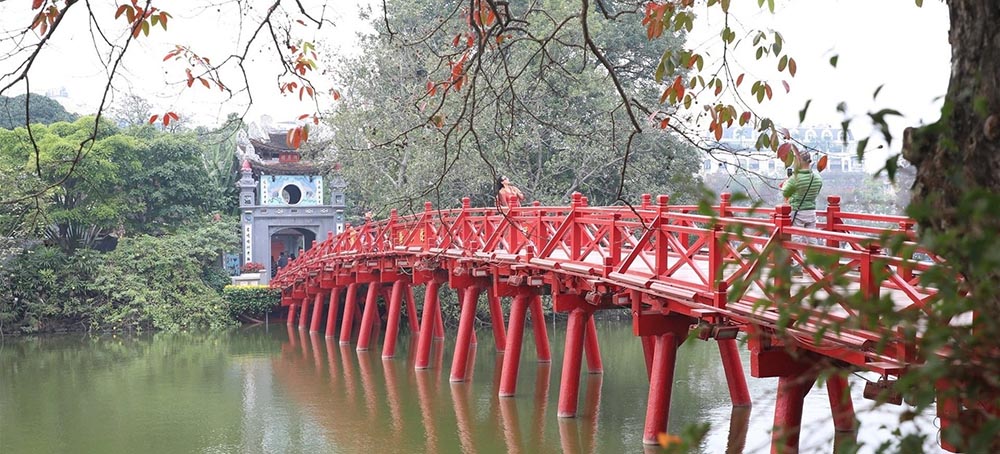
A UNESCO World Heritage Site, the Imperial Citadel of Thang Long is a monumental testament to Vietnam's history, showcasing the evolution of its political and architectural landscape. Dating back to the 11th century during the Ly Dynasty, it has stood as a pivotal center of power for over 13 centuries, witnessing the rise and fall of various dynasties. Visitors to the citadel are greeted by a blend of ancient remnants and significant structures, including the Hanoi Flag Tower, which boldly rises above the complex, serving as a symbol of national pride.
The citadel's layout is not only impressive but also reflects the influences of different cultures throughout its history. The archaeological relics uncovered here, such as remnants of the Kinh Thien Palace, offer insights into the life and governance of ancient Vietnam. Each brick and stone tells a story, inviting visitors to ponder the lives of emperors and the people who inhabited this space.
| Structure | Description | Historical Significance |
|---|---|---|
| Hanoi Flag Tower | A 40-meter tall tower | National symbol |
| Doan Mon Gate | Main entrance to the citadel | Architectural marvel |
| Kinh Thien Palace | Site of governance | Cultural heritage |
Exploring this vast complex not only provides an understanding of Vietnam’s regal lineage but also paints a picture of the resilience and evolution of its people. As visitors traverse the grounds, they cannot help but feel a sense of connection to the past, making the Imperial Citadel of Thang Long an indispensable journey into Vietnam's historical narrative.
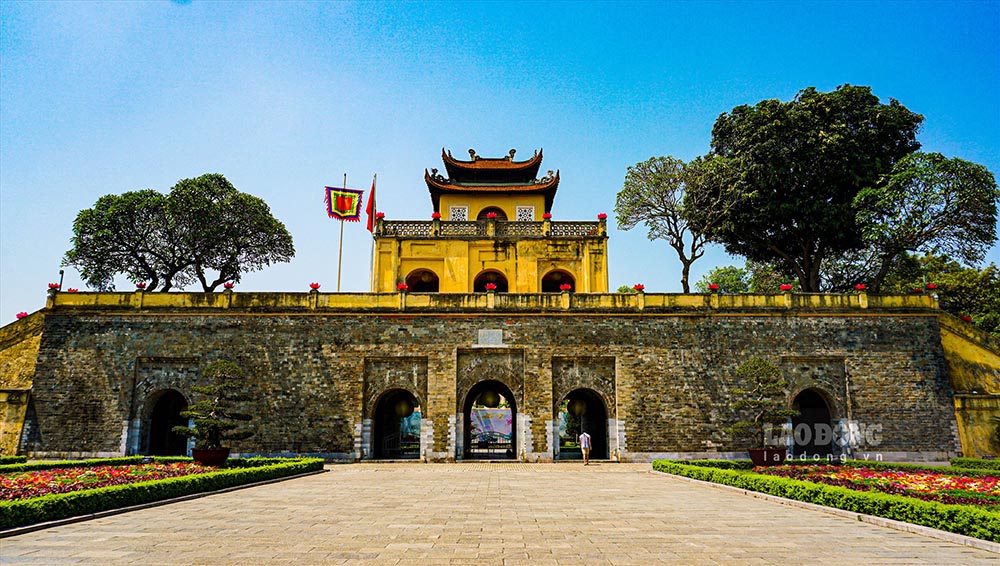
TheHoa Lo Prison, often dubbed the "Hanoi Hilton," carries a heavy yet essential legacy that continues to resonate with visitors today. Constructed in the late 19th century by the French colonial government, this prison was designed to hold political activists and revolutionaries who opposed colonial rule. It has since transformed into a museum, showcasing the harsh realities of life behind bars and the resilience of the Vietnamese spirit.
Walking through the haunting corridors of Hoa Lo Prison, one cannot escape the sense of sorrow and strength encapsulated within its walls. Exhibitions include chilling photographs, artifacts, and accounts of detainees, illustrating the brutal conditions they faced. One poignant display features the experiences of American POWs during the Vietnam War, offering insight into a deeply layered history. The narratives presented at the museum draw visitors into the emotional and complex depths of Vietnam’s struggle for freedom.
| Exhibits | Highlights | Visitor Experience |
|---|---|---|
| Political Prisoners | Stories of resilience | Emotional engagement |
| POWs | American soldier accounts | Insight into history |
| Artifacts | Items used by prisoners | Educational exploration |
The Hoa Lo Prison serves as a crucial reminder of the sacrifices made for independence, urging visitors to reflect on the importance of history and the fight for justice. The juxtaposition of suffering and hope presented within its confines is both sobering and inspiring, making it a significant location for understanding Vietnam's tumultuous past.
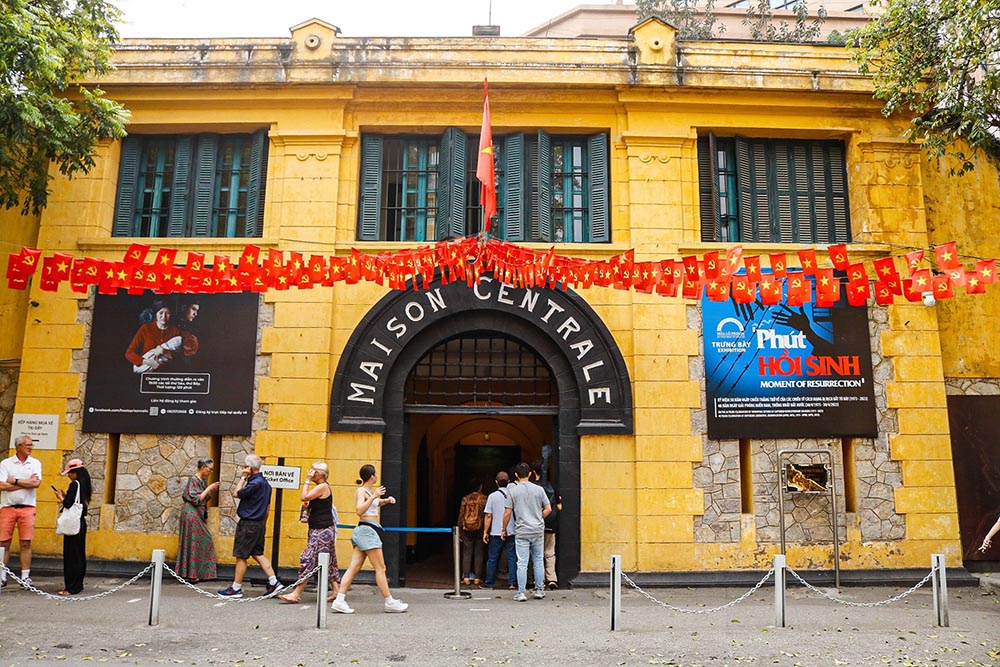
As you traverse the historical attractions of Hanoi, you’ll discover that the city is not just a repository of its past; it is a vibrant hub of cultural experiences that bring its history to life. From traditional arts like water puppet shows to culinary adventures through local markets, Hanoi's cultural landscape reflects the diverse ways in which its heritage is celebrated and expressed. Such interactions reveal the city's dynamic character, showcasing the fusion of its ancient traditions with the rhythms of modern life.
Engaging in these cultural experiences not only enhances your appreciation of Hanoi but also provides a deeper understanding of the daily lives and values of its people. Each performance, dish, and market encounter contributes to the rich tapestry of Vietnamese identity, inviting travelers to immerse themselves in the local way of life.
One of the most enchanting cultural experiences in Hanoi is the traditional water puppet show, a unique art form that dates back over a thousand years. The Thang Long Water Puppet Theatre, located just steps from Hoan Kiem Lake, is the premier venue for this captivating spectacle. Here, local artisans skillfully manipulate puppets over a water stage, bringing to life stories from Vietnamese folklore and rural traditions.
The performances are a harmonious blend of artistry, music, and storytelling, each show typically lasting around one hour. Audiences are transported to a world of ancient legends, epic battles, and playful interactions between humans and mythical creatures. The vibrant colors and fluid movements of the puppets gracefully emerging from the water create a captivating visual experience that resonates deeply with both locals and tourists alike.
| Feature | Details |
|---|---|
| Venue | Thang Long Water Puppet Theatre |
| Performance Duration | Approximately 1 hour |
| Cultural Significance | Represents rural life and folklore |
| Admission Price | 100,000 - 200,000 VND |
The accompanying live orchestra, typically featuring traditional instruments such as the bamboo flute and drum, adds another layer of richness to the experience, complementing the vivid storytelling on display. Visitors are often left in awe of the intricate craftsmanship and creativity that go into each performance. A water puppet show not only entertains but also allows audiences to gain insights into the cultural heritage of Vietnam, reaffirming its value as a must-see attraction in Hanoi.
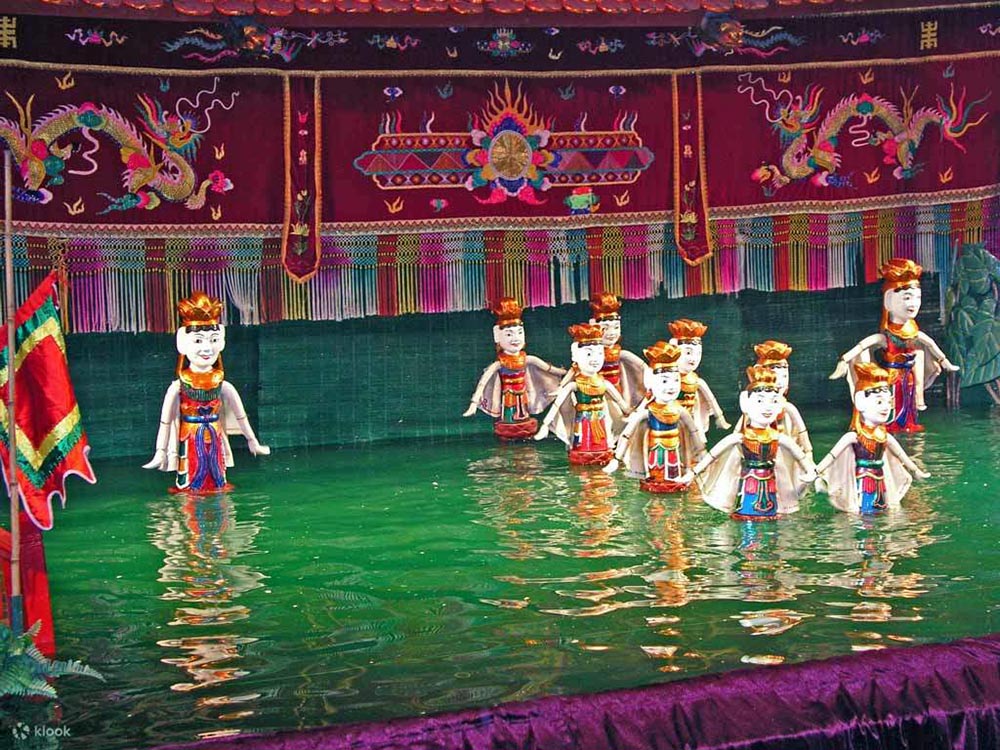
Vietnamese cuisine is renowned for its bold flavors and fresh ingredients, and in Hanoi, there’s no better way to experience it than through guided food tours. One of the best ways to delve into the culinary landscape is by embarking on a walking food tour in the bustling Old Quarter. These tours typically last about three hours, showcasing local specialties such as phở, bánh mì, and fresh spring rolls, all while offering insights into the history and preparation of each dish.
At the heart of these culinary journeys lies Dong Xuan Market, Hanoi's largest covered market, where visitors can immerse themselves in a vibrant atmosphere brimming with sensory delights. The market is a treasure trove of flavors, offering everything from fresh produce and local spices to street food vendors serving steaming bowls of bun cha and aromatic Vietnamese coffee.
| Food Items | Description | Typical Locations |
|---|---|---|
| Phở | Rice noodle soup with herbs and beef | Street vendors and local restaurants |
| Bánh mì | Vietnamese sandwich | Food stalls at Dong Xuan Market |
| Bun cha | Grilled pork with noodles | Old Quarter eateries |
Participating in these food tours enhances your travel experience by providing a deeper understanding of Vietnam’s food culture, which is steeped in tradition and community. Knowledgeable local guides share stories about the significance of each dish within Vietnamese society and culinary history, turning a simple meal into a meaningful cultural exchange. These culinary adventures are not just about tasting delicious food they are about connecting with the heart and soul of Hanoi through its gastronomy.
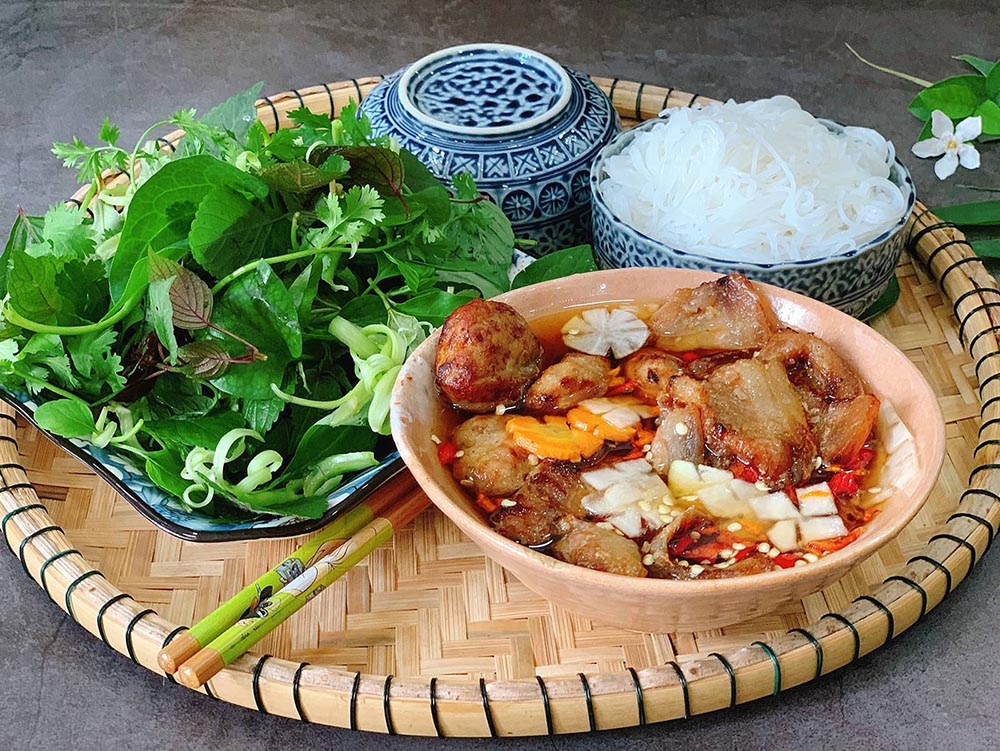
Dong Xuan Market, an intriguing blend of tradition and modernity, stands as the largest covered market in Hanoi, attracting both locals and tourists. This bustling hub is the perfect place to experience the vibrant flavors, colors, and sounds of daily life in Vietnam. Spanning multiple levels, the market is filled with small shops and food stalls selling everything from fresh ingredients to clothing and handicrafts, making it an essential stop for any visitor.
The market's atmosphere is electric, with vendors calling out to passersby while the fragrant aromas of street food tempt the palate. It's a culinary paradise where visitors can try local specialties right from the source, such as the famed bun cha or delicious xoi (sticky rice). Navigating through the narrow aisles, you'll encounter the diverse tapestry of Hanoi's culture captured in the products and faces that fill the space.
| Market Features | Highlights | Visitor Experience |
|---|---|---|
| Size | Largest covered market in Hanoi | Bustling and vibrant atmosphere |
| Product Variety | Fresh produce, street food, textiles | Immersive cultural experience |
| Accessibility | Centrally located | Easily reachable from Old Quarter |
Exploring Dong Xuan Market allows visitors to engage directly with local vendors, offering insights into everyday life in Hanoi. It’s an opportunity to sample fresh fruits, vibrant herbs, and even participate in the negotiation of prices, contributing to the market's lively energy. Whether you’re hunting for souvenirs or indulging in tasty treats, Dong Xuan Market serves as a microcosm of Hanoi's culture, drawing you into the rhythm of life in this bustling city.
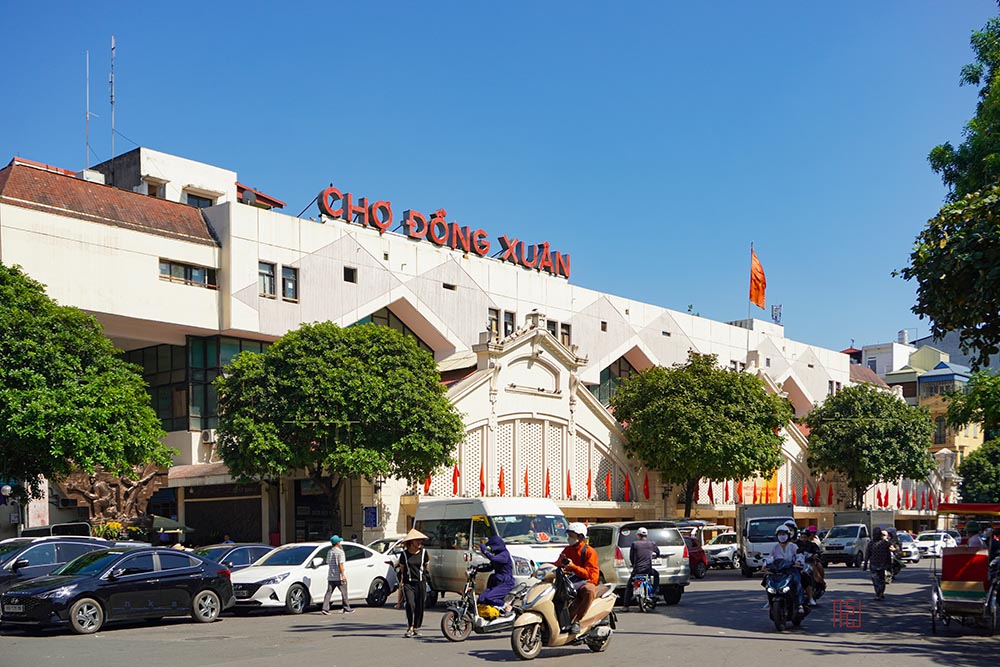
While Hanoi is celebrated for its rich history and vibrant culture, it also boasts stunning natural attractions that offer a respite from urban hustle. Among these are beautiful parks and national reserves where visitors can reconnect with nature and discover Vietnam's diverse wildlife. Locations like Ba Vi National Park and Tam Dao National Park provide breathtaking landscapes and opportunities for outdoor exploration, making them perfect getaways for nature enthusiasts.
These natural wonders invite visitors to unwind amidst lush greenery, cascading waterfalls, and serene lakes. Engaging with nature's beauty not only rejuvenates the spirit but also showcases the environmental richness that Vietnam treasures. As we dive into the details of these natural attractions, you'll find that they are essential to the overall experience of visiting Hanoi.
Nestled just 48 to 68 kilometers west of Hanoi, Ba Vi National Park is a breathtaking natural haven known for its mountainous terrain and lush biodiversity. Covering an area of 108.2 square kilometers, the park is home to three prominent peaks: King Peak (1,296m), Tan Vien Peak (1,227m), and Ngoc Hoa Peak (1,131m). These peaks not only provide stunning panoramic views of the surrounding countryside but also attract hikers and adventure seekers looking to immerse themselves in nature.
Ba Vi National Park is rich in diverse ecosystems, containing subtropical humid evergreen forests housing over 2,181 tree species, 503 species of medicinal plants, and an array of endemic animals. Bird watchers, in particular, will find joy in observing the numerous bird species that call the park home. Among the most picturesque spots in the park is Ao Vua Lake, a tranquil setting ideal for relaxation and picnics.
| Feature | Details |
|---|---|
| Park Area | 108.2 square kilometers |
| Notable Peaks | King Peak, Tan Vien Peak, Ngoc Hoa Peak |
| Biodiversity | 2,181 tree species, 503 medicinal plants |
| Scenic Spots | Ao Vua Lake, butterfly gardens |
For those looking to explore more than just the trails, the park offers opportunities for camping and engaging with nature closely, with areas around the cactus greenhouse showcasing over 1,200 types of cacti. Ba Vi National Park serves as a popular destination for day trips, providing a refreshing and rejuvenating escape from the vibrancy of Hanoi, making it essential for nature lovers and outdoor enthusiasts alike.
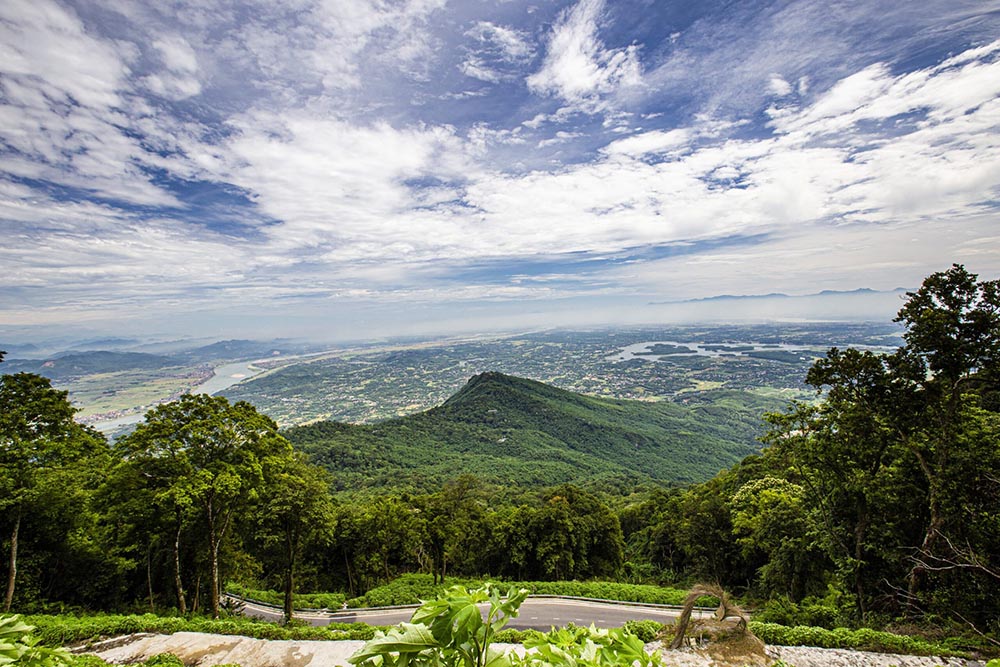
Approximately 70 kilometers from Hanoi lies Tam Dao National Park, a tranquil escape that spans three provinces: Tuyen Quang, Thai Nguyen, and Vinh Phuc. Covering an impressive area of about 35,000 hectares, this national park is celebrated for its stunning landscapes, cool climate, and rich biodiversity. Visitors to Tam Dao can encounter over 1,200 species of flora and 163 species of fauna, some of which are rare and endemic, making it a biodiversity hotspot.
The park is characterized by its majestic peaks, serene lakes, and scenic waterfalls that attract trekkers, campers, and birdwatchers eager to explore its natural charms. The elevation of Tam Dao offers a refreshing climate, particularly appealing during the summer months when temperatures in surrounding areas soar. Popular activities include hiking through the lush forests and witnessing the park's breathtaking natural beauty firsthand.
| Features | Highlights |
|---|---|
| Area | 35,000 hectares |
| Biodiversity | 1,200 plant species, 163 animal species |
| Popular Activities | Trekking, camping, birdwatching |
| Climate | Cooler temperatures in summer |
Tam Dao's tranquil environment allows visitors to take in the sights and sounds of nature, with many also taking advantage of its cooler climate to escape the heat of Hanoi. The combination of stunning scenery, rich biodiversity, and the opportunity for outdoor activities makes Tam Dao National Park a gem worth exploring.

An iconic landmark in Hanoi, Long Bien Bridge is not only an engineering marvel but also a historical symbol. Constructed in 1902 during the French colonial period, the bridge stretches across the Red River, providing breathtaking views of the landscape while also serving as an important transportation link. Its architectural design features distinct French influences, and the structure has withstood the ravages of conflict, being one of the few bridges that survived the Vietnam War.
The picturesque scenery at Long Bien Bridge, especially at sunset, attracts photographers and romantics alike. The bridge's railings often bustle with cyclists, motorbikes, and pedestrians, creating a vibrant tableau of life in Hanoi. A walk across this historic bridge transports visitors to a time when it stood as a crucial lifeline for the city, illustrating both the resilience and the spirit of Hanoi’s people.
| Feature | Details |
|---|---|
| Construction Year | 1902 |
| Historical Significance | Survived the Vietnam War |
| Architectural Style | French colonial |
| Scenic Views | Stunning sunsets over the Red River |
Long Bien Bridge is more than just a means of crossing; it captures the essence of Hanoi’s enduring spirit and evolution through time. As locals pass through daily, the bridge serves as a thriving reminder of the city’s history and a beacon for those who wish to explore its layers.
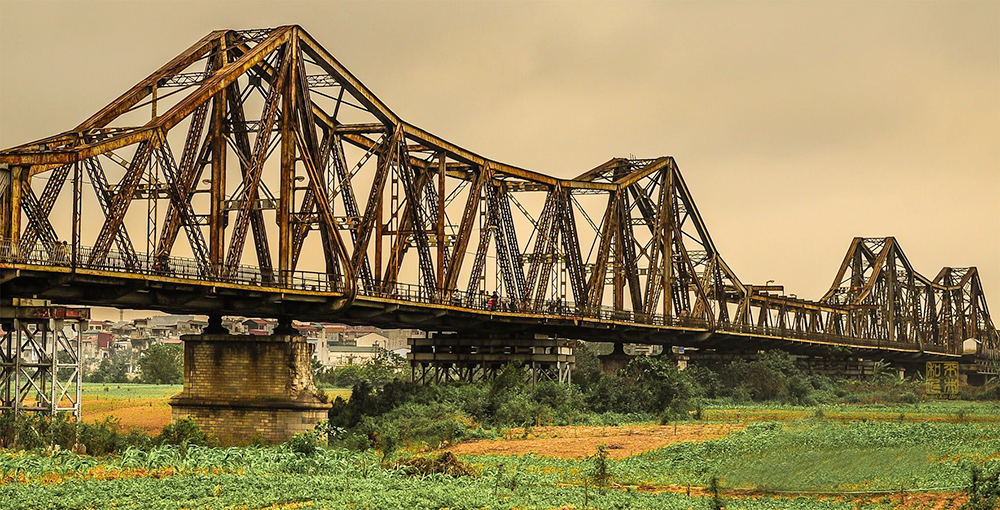
Hanoi harmoniously blends natural beauty, rich history, and vibrant culture into a seamlessly connected city, where attractions may be grouped by themes for easier exploration. From religious sites steeped in spirituality to green parks offering rejuvenation, the city offers thematic experiences that reflect the diverse aspects of Vietnamese life. Each grouping provides a pathway for visitors to navigate through Hanoi’s extensive offerings, enriching their understanding of what makes the capital unique.
By categorizing attractions, one can focus on specific interests be it historical exploration, culinary adventures, or natural escapades. As we delve into various themed categories, you will uncover the multifaceted charm of Hanoi and discover how each element contributes to the city's overall identity.
Hanoi is home to an array of religious sites that showcase the city's intricate spiritual heritage. These sacred places reflect both the Buddhist and Confucian ideals that have woven themselves into the fabric of Vietnamese life. Among the most significant sites are ancient Buddhist pagodas and temples that evoke a sense of tranquility and reverence, drawing visitors who seek a deeper connection to Vietnam’s spiritual practices and rich history.
Key religious sites include:
Tran Quoc Pagoda: Dating back 1,450 years, this ancient pagoda is the oldest in Hanoi and symbolizes the enduring nature of Buddhist beliefs in Vietnam. Located on the serene West Lake, it offers a peaceful retreat away from the bustling city.
One Pillar Pagoda: Built in the 11th century, this unique structure resembles a blossoming lotus flower and reflects Buddhist ideals of purity. Erected by King Ly Thai Tong, it captures the imagination with its distinct design and historical significance.
Bach Ma Temple: One of the Thang Long Four Sacred Temples, this site is dedicated to the city's patron saint, Long Do. Its intricately designed architecture and historical artifacts provide a glimpse into the reverence local people have for their protective deities.
| Religious Sites | Description | Cultural Importance |
|---|---|---|
| Tran Quoc Pagoda | Oldest pagoda in Hanoi | Symbol of Buddhist traditions |
| One Pillar Pagoda | Unique lotus-shaped structure | Represents purity in Buddhism |
| Bach Ma Temple | Honors Hanoi's patron saint | Part of the city's cultural heritage |
Visiting these religious sites immerses travelers in the spiritual essence of Hanoi, inviting moments of reflection and quiet contemplation. As you explore these sacred grounds, you will gain insight into the belief systems that shape Vietnamese culture and the significant role religion plays in the lives of its people.
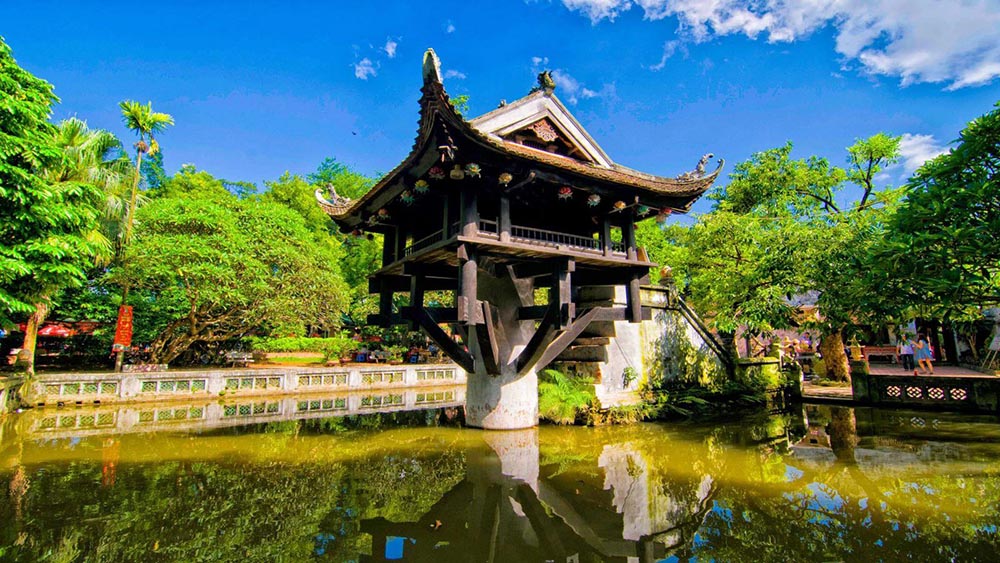
As urban development evolves, parks and green spaces have become essential sanctuaries within Hanoi's vibrant cityscape. The presence of these oases amidst the hustle and bustle of city life enhances the quality of life for both residents and visitors, offering tranquil spots for relaxation and rejuvenation. These venues not only beautify the city but also provide various recreational activities that allow people to connect with nature.
Among the prominent parks are:
Hoan Kiem Lake: Central to Hanoi, this tranquil lake serves as a popular meeting spot for locals engaged in tai chi and offers shady paths perfect for leisurely strolls. Its beauty enhances the urban experience while retaining a piece of nature's tranquility.
Bach Thao Botanical Garden: This historical park boasts diverse plant species and scenic trails, making it an ideal location for family outings and leisurely walks. The lush landscape invites visitors to escape and enjoy time outdoors.
Yen So Park: Located 12 kilometers south of the city center, this expansive park offers recreational facilities, including sports fields and picnic areas, in a serene environment. It is a favorite for families looking to enjoy outdoor activities.
| Park Features | Description | Activities Available |
|---|---|---|
| Hoan Kiem Lake | Central lake with scenic views | Tai chi, walking, relaxing |
| Bach Thao Park | Botanical garden with diverse flora | Leisure walks, family outings |
| Yen So Park | Expansive recreational park | Sports, picnics, outdoor activities |
Exploring Hanoi's parks offers a refreshing contrast to the city’s energetic pace. These green spaces act as urban escapes, allowing visitors to unwind, engage in outdoor activities, or simply enjoy the beauty of nature. They play a vital role in fostering a sense of community and connection amidst the communal rhythm of daily life.
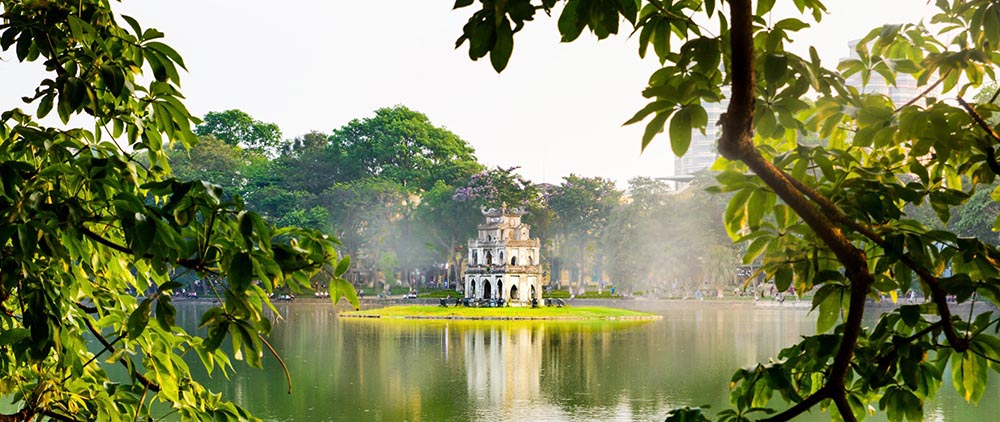
Hanoi's rich historical narrative is also preserved through its educational institutions and museums, each contributing to the understanding of Vietnam's cultural development. These institutions allow visitors to delve deeper into Vietnam's heritage, offering insights into its arts, history, and societal evolution. They stand as bastions of learning and reflection throughout the city.
Prominent educational and cultural sites include:
Vietnam Museum of Ethnology: This museum offers a fascinating glimpse into the diverse ethnic cultures of Vietnam, featuring an extensive collection of artifacts and exhibits that engage visitors in the nation's rich heritage.
Ho Chi Minh Museum: This museum is dedicated to the life and legacy of Vietnam's revolutionary leader, Ho Chi Minh. It showcases various exhibits related to his contributions to the country's independence and socio-political life.
Vietnam Fine Arts Museum: Home to a vast collection of Vietnamese art, this museum showcases the evolution of artistic styles and cultural expression throughout history, providing a platform for both historical and contemporary artists.
| Institutions | Highlights | Visitor Experience |
|---|---|---|
| Vietnam Museum of Ethnology | Insights into ethnic diversity | Educational engagement |
| Ho Chi Minh Museum | Exhibits on Ho Chi Minh's life | Reflection on revolutionary history |
| Vietnam Fine Arts Museum | Collection of Vietnamese art | Exploration of artistic heritage |
Each of these institutions contributes to a broader understanding of Hanoi's culture and education, inviting visitors to explore Vietnam's identity through art, history, and anthropology. By immersing yourself in these remarkable venues, you’ll gain a deeper appreciation for the country’s heritage and the complexities that shape its present.
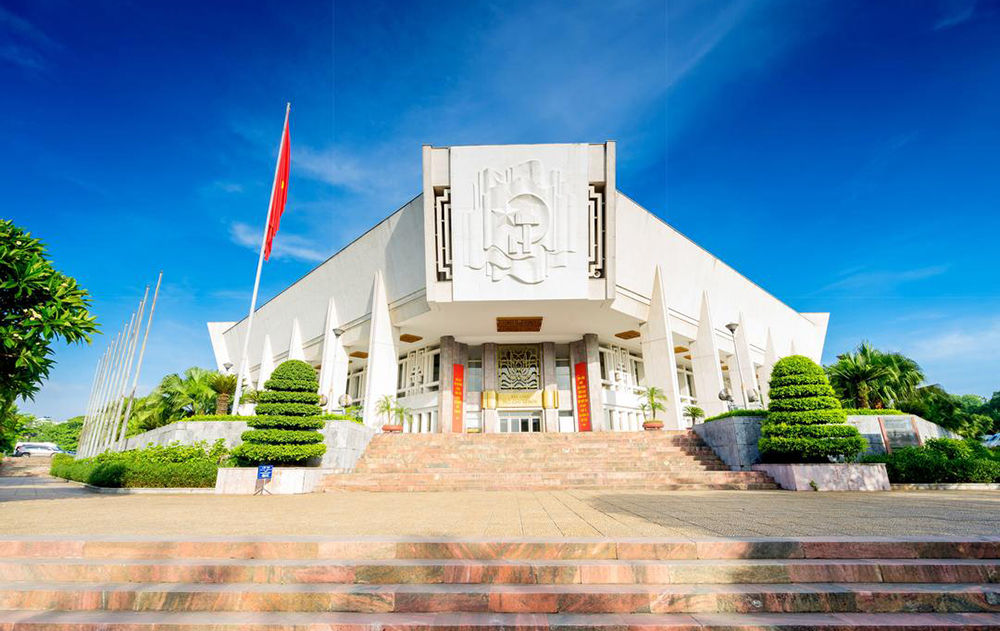
What is the best time to visit Hanoi?
Are there guided tours available for historical attractions?
What are some popular local dishes to try in Hanoi?
How do I get around in Hanoi?
Is it safe to visit local markets in Hanoi?
Hanoi is an enchanting city that beckons to be explored, offering a mosaic of historical landmarks, vibrant cultural experiences, breathtaking natural landscapes, and diverse green spaces. This rich tapestry paints a vivid picture of Vietnam's identity, beckoning travelers to immerse themselves in its charm. From the serene beauty of Hoan Kiem Lake and the rich history of the Imperial Citadel of Thang Long to the enticing flavors of local cuisine and the whispers of ancient temples, every experience in Hanoi creates lasting memories.
The city’s ability to blend tradition with modernity serves as a celebration of its enduring spirit, inviting both discovery and reflection. As you journey through this captivating capital, you'll find that the stories it tells, the flavors it offers, and the beauty it encompasses are all part of a larger narrative one that continues to unfold with each visit. Embrace the adventure, and let Hanoi's attractions guide you through the heart of Vietnam.